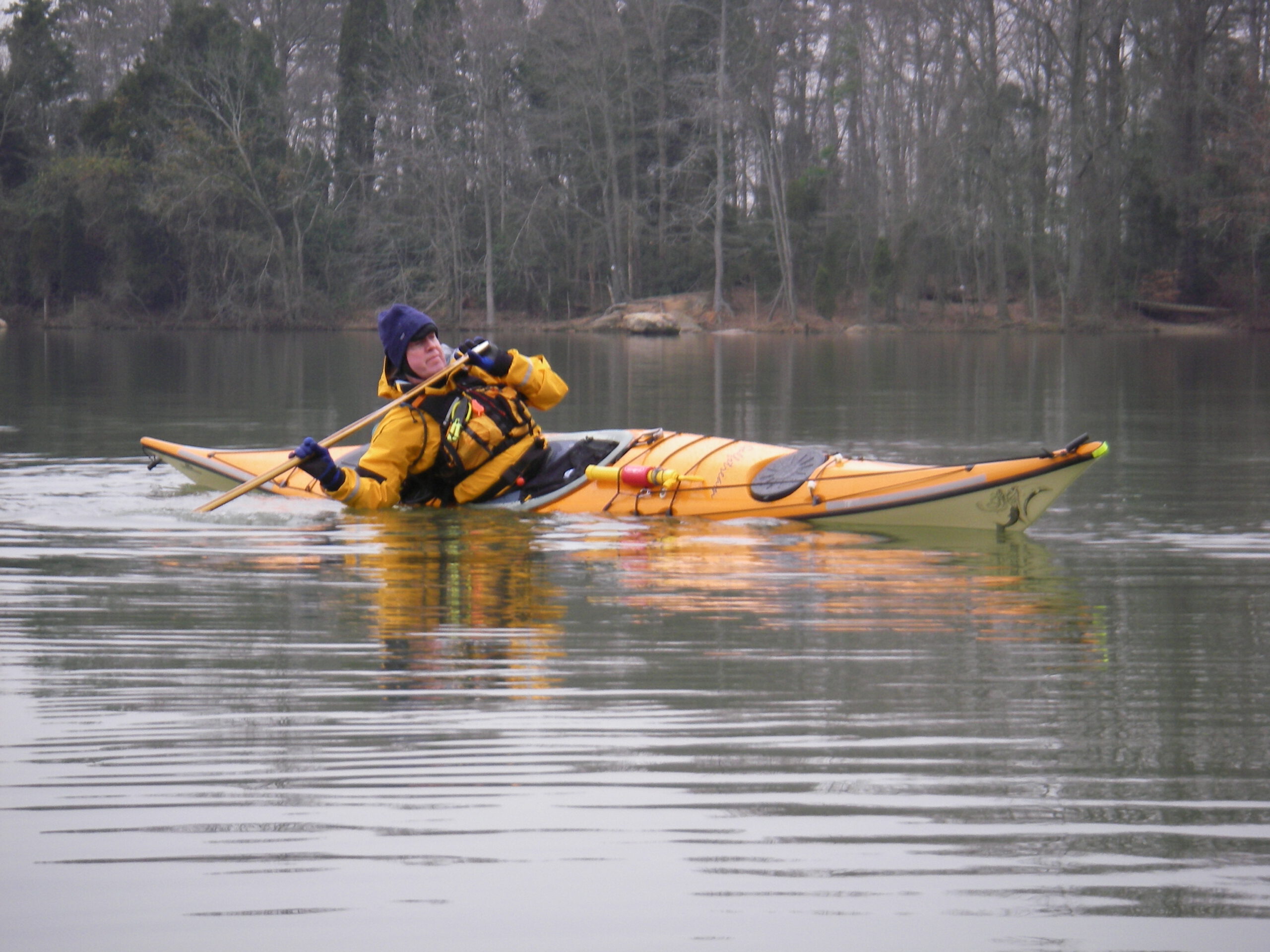
“A Place for Everything and Everything In Its Place”
By Bill Mauney
When loading a sea kayak not only does one need to pay attention to weight distribution, trim, listing, etc., but also one should make sure that the items are packed in a way that is convenient and makes sense. What follows is not an exhaustive treatise on the subject. This is just an overview. What you ultimately end up with will be as unique as you are. There is no perfect way to do this. You must come up with what works for you. What follows are some guidelines, along with the information in Part I, will guide you.
Let’s start with the fore deck. In front of you needs to be your marine deck mounted compass. These can be permanently or temporarily mounted. The key is to have it mounted as far forward as you can and still be able to read it accurately. This allows you to look up easily to find targets that are in line with your heading. This forward position also helps prevent seasickness because it is easier to keep an eye on the horizon instead of your rocking kayak.
Between you and the compass should be your waterproof chart case. This will be mounted to the deck rigging just forward of the cockpit. The chart is best viewed from above when doing chart work so mount it as close as possible to the cockpit. Some chart cases allow the user to pull it over the deck of your spray skirt and then return it to the fore deck when it is no longer needed. A small mesh “ditty bag” is useful to store a grease pencil, backpacker’s or bearing compass, course plotter, sunscreen, etc. Make sure all items on deck are attached to deck rigging or tethered in some way, as even a small wave will wash them overboard.
On your person (PFD pockets, clothing pockets, spray skirt pockets, or waist pack should be items needed for signaling for assistance, and short term emergencies in case you capsize and are separated from your kayak. What you carry depends on the remoteness of the shoreline and what might be needed for short or long term survival until help arrives.
Gear stowed inside the cockpit varies from food and drink to emergency gear. A homemade or store bought “knee tube” or other below the fore deck storage area is ideal for accessing items while underway. Be sure that such a device does not make a wet exit difficult. Other items such as bilge pumps, sponges, extra flares, etc. can be stowed beside the seat between the seat hangers and the hull. Larger, heavier items like water can be stowed behind the seat. Any items that might float away or sink in the event of a capsize should be tethered or secured well.
The deck rigging just behind the cockpit may store your paddle float. Aft of that would be a spare paddle securely stowed on deck.
If your kayak has a “day hatch”, this is an ideal place to store those items that you might need to access while underway, but they need dry storage. Actually, there is no such thing as “dry storage” because even with bombproof hatches and bulkheads moisture in the air will condense on the cool interior surfaces. If it needs to stay dry, always use dry bags or dry boxes. Items in the day hatch might include camera, paddling jacket, an extra layer of clothing, a warm hat, lunch, water, first aid kit, other emergency items, etc.
Gear in the forward hatch or the aft hatch cannot be accessed while underway. It is best to pack theses areas with the gear you will need once you reach shore. These items are best stored in small dry bags or stuff bags and loaded like a mini container ship following the rules of weight distribution outlined in “Part I” of this article. Long, narrow, tapering dry bags work best for the very ends of the kayak. Make sure you can reach them before cramming them way into the ends of the kayak. If you can’t, tie a small piece of line to the bag and lay it along the keel line towards the hatch. This will relieve you from the frustration of not being able to retrieve your gear from the ends of your craft.
The first items you might want to retrieve after a long day of paddling in cold conditions might be dry, warm clothing, something to eat and a warm drink from a Thermos or heated by your stove. These items need to be easily accessible.
Remember to keep items containing batteries, speakers or iron/steel away from the area near or below your deck mounted marine compass. More on this in another article.
Finally, have a large mesh duffle bag on board. It weighs little, takes up very little space and is a lifesaver for hauling your gear to and from your kayak.
After a few trips, you will develop the “ideal” (of course you will always be “tweaking” it) plan for stowing your gear for day trips to multi day trips. Once you do, you will have “a place for everything and everything in its place”. When you need it, you’ll know where it is and how to access it.
Happy Paddling
Read More in our Coastal Paddling Series
